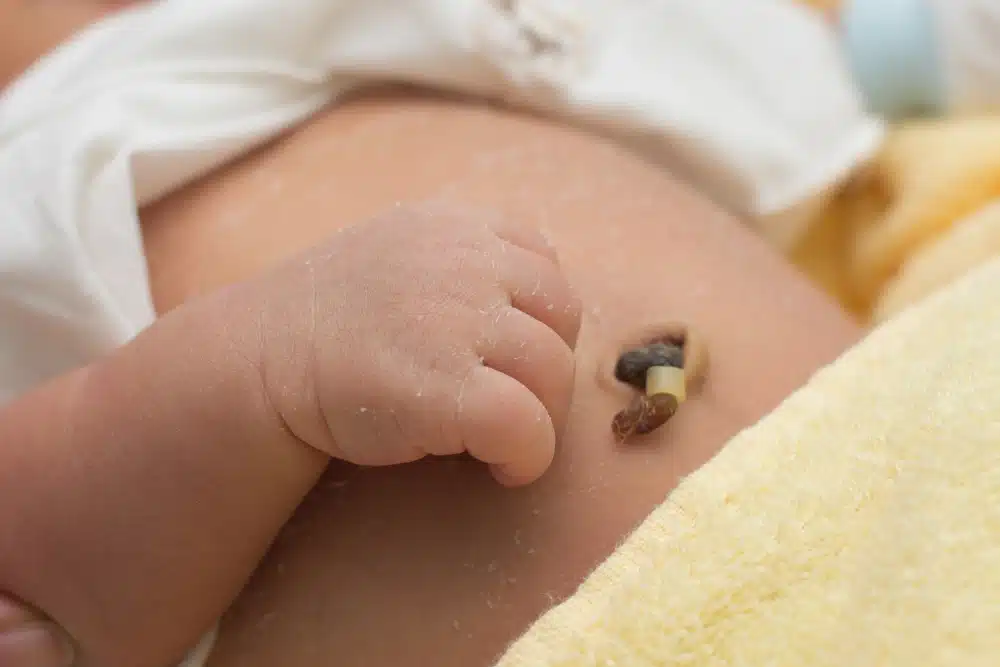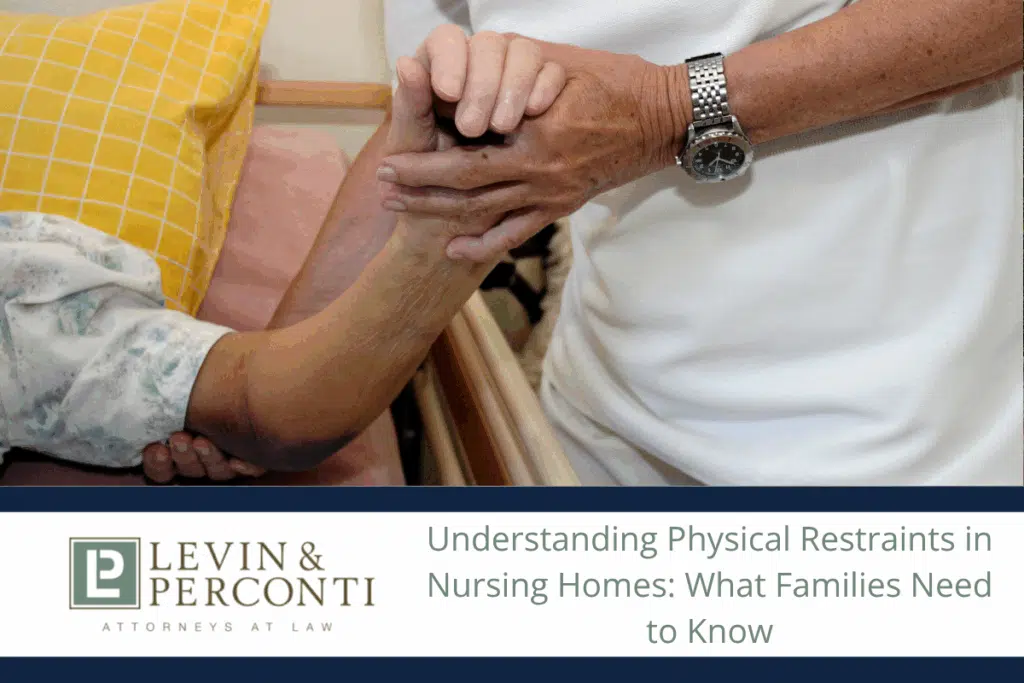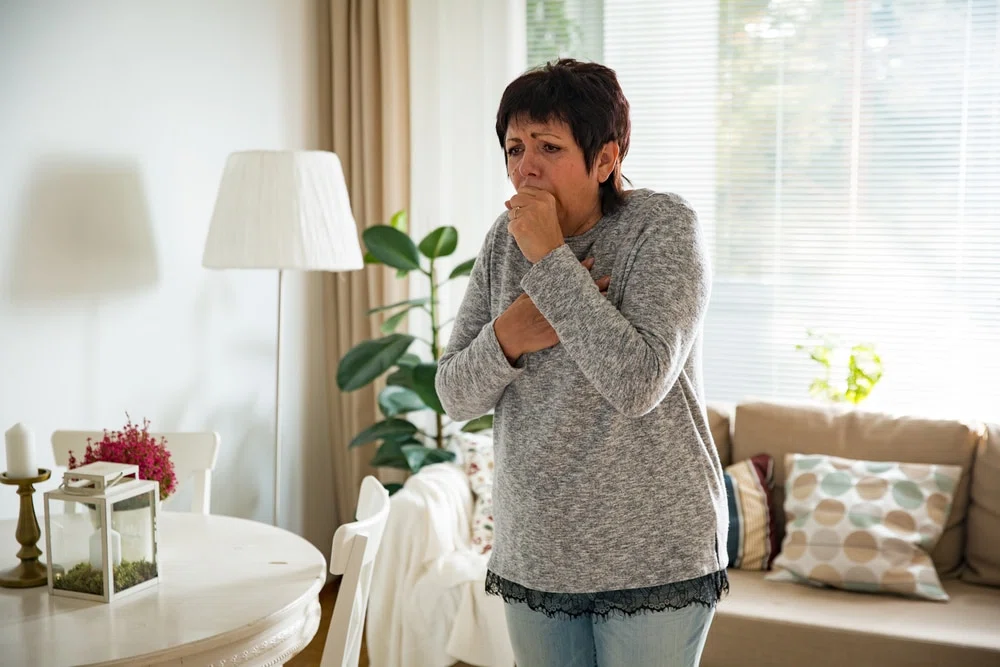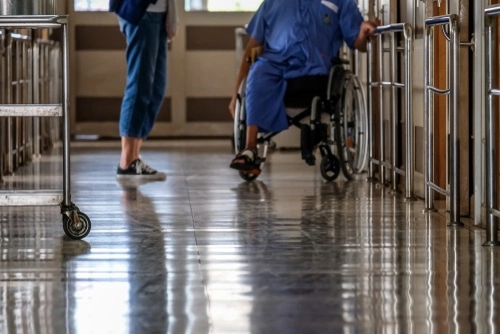Four Stages of Bedsores
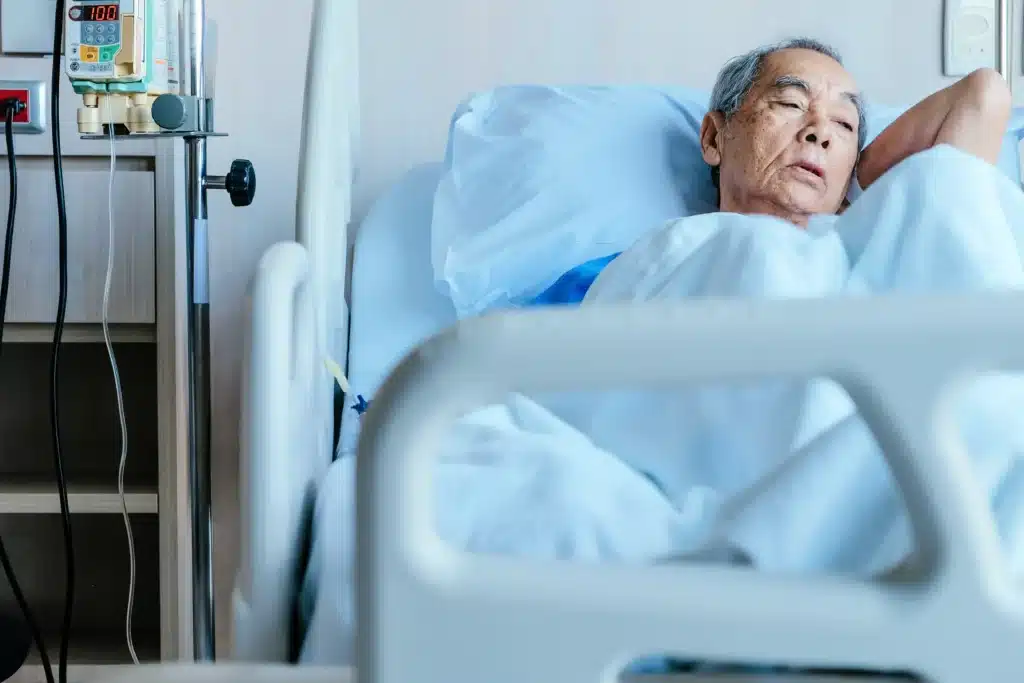
Bedsores are uncomfortable, potentially dangerous wounds that can develop when a patient can’t move without assistance. Pressure can compress one area of the body for too long, which causes skin and soft tissue to go without essential nutrients or oxygen. This malnutrition leads to tissue death and, in some cases, infection.
Home | Nursing Home Abuse & Neglect | Bedsores from Nursing Home Abuse | Four Stages of Bedsores
Getting a bedsore in a health care facility is a serious form of negligence and could put a patient’s life at risk. Bedsores, also called pressure sores, pressure injuries, and decubitus ulcers, can cause severe pain and infection. Pressure ulcers are categorized by the National Pressure Ulcer Advisory Panel into four stages, based on the degree of tissue involvement and the overall depth of a bedsore.
Bedsores are categorized based on the number of layers of the skin that are affected by the wound. The tissue layers that may be involved include the:
- Epidermis, which is the outermost layer of the skin
- Dermis, which is the second layer of the skin
- Hypodermis, which is the lower layer of the skin that is made of connective tissues and fat
- Fascia or the layer of connective tissue that lies below the skin (this layer encloses the blood vessels, internal organs, muscles, and nerves)
As bedsores become more severe, they affect each of these layers. The deeper into the skin the sore extends, the more likely it is that the person will have pain, a greater risk of infection, and other complications.
Below are the standard four stages of bedsores. Beyond the following four classifications, a bedsore can be deemed “unstageable.” For example, it may not be possible to stage an ulcer with overlapping tissues or one that first requires debridement (removal of damaged tissue). In these cases, surgery may be necessary before the ulcer can be classified.
It is also possible that a pressure ulcer appears to be stage one or two but is actually much more severe, leading to a unique classification of “stage one/two with a suspected deep tissue injury.” Further examination would then be required to determine the actual stage of the wound.
Stage One
A stage one pressure sore is the mildest pressure sore. It may develop in just a few hours, and it usually looks like a red mark on the skin.
This type of pressure sore only affects the upper layer of the skin. Stage one pressure sores make the skin red or discolored, which may not look very serious at first. The patch of skin may feel warm to the touch or not lighten as usual when pressed. It might also feel firm or soft compared to the surrounding skin.
Though pressure wounds cause redness and discoloration in lighter-skinned individuals, this physical sign isn’t consistent in those with darker skin. According to the article “Review of the Current Management of Pressure Ulcers,” dark patches or purple tones might be seen instead of redness.
During stage one, it is common to see tissue swelling and induration, which is the hardening of the tissues. If these symptoms are present, pressure should immediately be removed from the affected area. If pressure is not alleviated, the bedsore may progress to a stage two ulcer, which becomes more difficult to treat. It’s critical for health care professionals to be checking for signs of pressure sores so that wounds don’t progress past stage one. A stage one ulcer may heal within three to four days when diagnosed and treated in a timely fashion.
What Should You Do if You Have a Stage 1 Pressure Ulcer?
The simplest thing to do right away is to take pressure off the ulcer. This can be done by changing your position or using a new foam pad, mattress, or pillow that alleviates the strain on your body parts.
Caretakers should move patients who have to spend extended periods of time in bed or a wheelchair at least once every two hours. Patients in sitting positions should move around one time every 15 minutes, so as to remove pressure from the backs of their knees and ankles.
Eating a well-rounded diet high in protein, vitamin A, vitamin C, iron, and zinc may help your skin recover. You can work with a nutritionist or nursing home staff to develop a meal plan that’s appropriate for you or your loved one.
It’s also important for residents to receive proper grooming, including regular bathing. Cleansing the affected area with mild soap and water is helpful to prevent an infection.
Patients with paralysis or nerve damage may be unaware of pain or injuries from bedsores. Therefore, they may require the assistance of a health care professional to remind them to move or to aid in repositioning them or making other adjustments to ensure their comfortability and prevent the development of pressure ulcers. This information should be included in a care plan. Nursing homes must have care plans for each resident to establish appropriate care for your loved one. These care plans take into consideration a resident’s current physical and mental health status and allow for regular assessments and revisions to guide optimal ongoing care.
Stage one bedsores may heal in as few as two to three days, but can sometimes last longer. Keep your medical provider informed on the status of your pressure ulcer to ensure it’s healing properly.
Stage two
As the sore becomes deeper and affects the next layer of tissue, the formerly intact skin breaks, exposing the dermis. The dermal layer contains connective tissue, blood vessels, oil and sweat glands, hair follicles, and nerves. Beneath the dermis is the hypodermis or the fatty layer. At stage two, the fat is not yet exposed.
With a stage two ulcer, the pressure ulcer is clearly visible. The ulcer, now called a lesion, is still superficial, and it may resemble a popped blister, abrasion, or small crater.
Stage two ulcers appear as red or purple in color and may be warm to the touch. It’s typical with stage two pressure ulcers to see clear fluid where the skin is broken.
Stage two pressure ulcers typically form when circulation is cut off from the tissue for two to three hours. As the skin dies, the ulcer quickly progresses through stages one and two. Relieving pressure and allowing blood and oxygen to reach the area will help arrest any further damage.
What Should You Do if You Suspect a Stage Two Pressure Ulcer?
A stage two pressure ulcer may present as warm and red with broken skin, making the wound vulnerable to infection. Nursing home staff should treat the wound similarly to stage one bedsores, using water and a saltwater mixture to keep the area clean. This treatment can be painful for some people, requiring an over-the-counter or prescribed pain medication administered by the treating physician or nurse about a half-hour before cleaning the wound.
Your medical care provider might keep the sore covered with a moist gauze or a see-through dressing to be able to view the sore as it heals. They will likely check you for signs of infection, such as a fever, redness, or pus. Let your doctor know if the injury doesn’t seem to be healing, your pain is increasing, or you’re not feeling well. In cases involving nursing home residents, the healthcare staff is responsible for monitoring these symptoms.
Typically, a stage two bedsore takes about three days to three weeks to heal. This can vary, depending on the treatment received and the overall health status of the impacted individual.
Stage Three
Stage three bedsores have reached a point where the second layer of skin has been damaged and the wound begins to affect fatty tissues. These ulcers are identifiable because they have a lesion that extends deep into the dermis. The hypodermis, also called the subcutaneous layer or subcutaneous tissue layer, is also affected.
During this stage, the wound is exposed to the air. A small crater-like shape will form where the skin has broken loose. In some cases, fat is discernible in the wound, but it is not likely that you’d see tendons, muscle, or bone.
At this stage, it’s more common to see visible pus. Some people may notice these injuries due to the unusual and foul smells they can produce.
Stage three ulcers are very serious and carry with them an increased threat of infection. Bone infections, called osteomyelitis, are possible. Sepsis may also occur as the infection progresses.
A stage three ulcer requires more aggressive treatment to heal, which can sometimes be needed for many months.. It’s typical for a stage three bedsore to heal within around one to four months, depending on the severity of the injury.
What Do You Do if You Have a Stage Three Pressure Ulcer?
If you have a stage three pressure ulcer, treating it needs to be taken seriously. Stage three sores require more intensive medical attention; you may need to go through surgery to debride the wound and remove any tissue that has necrotized, or died. It’s typical to be prescribed antibiotics to prevent or fight infections. You may also need a specialized mattress or bed to help prevent pressure from building in the area again.
Stage three sores should not be treated at home. You do need medical intervention. This kind of pressure sore may take up to four months to heal or more depending on the injury. Antibiotics and other treatments will help keep the wound clean so it can heal appropriately.
Again, if a wound forms while someone is a resident of a nursing facility, it’s the duty of the staff to ensure proper treatment. If you or a loved one developed a stage three pressure ulcer in a long-term care residence, it’s time to contact a nursing home bedsore attorney.
Stage Four
The most critical of all bedsores are those in stage four. These cause severe pain and pose a high risk of infection. They may begin to affect the muscles, ligaments, and tendons as they affect all layers of the skin and the underlying fascia. Muscle and bone are exposed to open air, which creates an incredibly high risk of infection.
As the most severe form of pressure ulcer, bedsores in this stage are the most difficult to treat. Damage to the nerves, tissues, joints, bones, and other parts of the body may occur, and there is likely to be significant drainage and pus coming from the wound.
At this stage, it is necessary to have aggressive treatment protocols in place to prevent a systemic infection that could become life-threatening. The mortality rate for elderly individuals with stage four pressure ulcers is estimated to be as high as 60%, according to a study from 2014.
Stage four pressure ulcers may take up to six months or more to heal with effective treatment. Daily wound care, antibiotics, and other supports may need to be used to help prevent systemic infections and complications.
What Should You Do if You Suspect a Stage Four Pressure Ulcer?
If you suspect a stage four pressure ulcer, you need immediate medical attention. If a bedsore at this stage is allowed to persist, it can lead to severe and life-threatening consequences for the affected person.
Stage four pressure ulcers are the most serious and may affect the muscles and ligaments. They are extremely painful, and can appear prominent and deep. These ulcers may turn black as the skin and surrounding tissue die.
Surgery may be needed to debride dead or infected tissue. Stage four ulcers that have become infected may have red edges, give off an odor, feel hot, be draining fluids, and maybe deep enough to show exposed bone, muscle, and tendons.
Stage four pressure ulcers can take anywhere from three months to years to heal, which is why it’s essential to seek medical attention as soon as possible. Early intervention when a pressure ulcer is suspected is imperative to help prevent the ulcer from worsening and reaching this severity.
Bedsores are preventable injuries. As these injuries persist, it’s apparent that neglect is a factor. When bedsores occur, you should consider seeking the guidance of a knowledgeable nursing home attorney to learn about your rights and eligibility for compensation.
Additionally, you should contact the Illinois Department of Public Health or an ombudsman to report the injury or mistreatment.
What if You Suspect a Pressure Ulcer of Another Stage?
There are other types of pressure ulcers, like unstageable ulcers and suspected deep tissue injury (SDTI) ulcers. In either case, it’s crucial to have a medical provider examine the tissues to properly diagnose your condition and start treatment.
Your medical provider may need to debride the injury or perform surgery to stage an unstageable ulcer. Then, they’ll offer their diagnosis and set up a treatment plan. If you suspect that you’re suffering from bedsores, consult a healthcare provider immediately.
How Can Levin & Perconti Help Me or My Loved One Suffering From Bedsores?
If you or your loved one developed bedsores while in the care of nursing home staff, you are dealing with a case of negligence or neglect. Bedsores are preventable injuries. The nursing home attorneys at Levin & Perconti specialize in nursing home abuse and neglect cases. Our founders are widely recognized as pioneers in this area of law, and our success litigating these types of cases has earned us the respect of our adversaries and the community at large.
We use our expertise and financial resources to push for maximum compensation for each of our clients. As a result, we have numerous record verdicts, including:
- $2.8 million record nursing home pressure sore settlement against a suburban Hillside nursing home and physician for a 59-year-old resident who developed multiple painful and infected bedsores which took four years to heal.
- $1.4 million nursing home bed sore settlement against a facility located in the northern suburbs for a former nursing home resident who sustained injuries as a result of a pressure sore.
- $1.2 million settlement for an 82-year-old nursing home resident who developed bed sores so severe that they caused an infection in the bone; she died as a result of complications from these injuries.
Nursing homes should be held accountable for injuries resulting from negligent or neglectful treatment of residents. Contact us today for a free consultation so that we can determine how we can best help you.
$1.4 million
Settlement
against a facility located in the northern suburbs for a former nursing home resident who sustained injuries as a result of a pressure sore.
$2.8 million
Settlement
record nursing home pressure sore settlement against a suburban Hillside nursing home and physician for a 59-year-old resident who developed multiple painful and infected bedsores which took four years to heal
$2.3 million
Settlement
for the family of an 88-year-old assisted living facility resident who developed severe and infected bed sores which ultimately brought about her death. Her doctor was criminally indicted for his conduct and charged with involuntary homicide
Past Client Testimonials
Don’t take our word for it. Hear from some of the medical malpractice victims we’ve helped:

They were most patient and responded timely to many questions throughout the entire process. All demonstrated professionalism and extensive knowledge of case and state laws. Their in-depth investigative work uncovered details which were unknown to us and yet sadly confirmed our suspicions. We would recommend the Levin and Perconti Law firm and especially this team.

Margaret’s representation, guidance, and professionalism gave us the sense that we could put our trust in Levin & Perconti and the final outcome proved that to be true.

Legally Reviewed by

Read Bio
Since 1976, Steve Levin has been dedicated to helping people injured by others’ negligence. He is one of the first attorneys in the U.S. to prosecute nursing homes for abuse and negligence. He’s also helped write new legislation that governs the operation of nursing homes, including the Illinois Nursing Home Care Act. Moreover, Levin & Perconti has obtained the top three jury verdicts in nursing home negligence cases in Illinois.
Related Pages
Notable Results
Related Blogs






